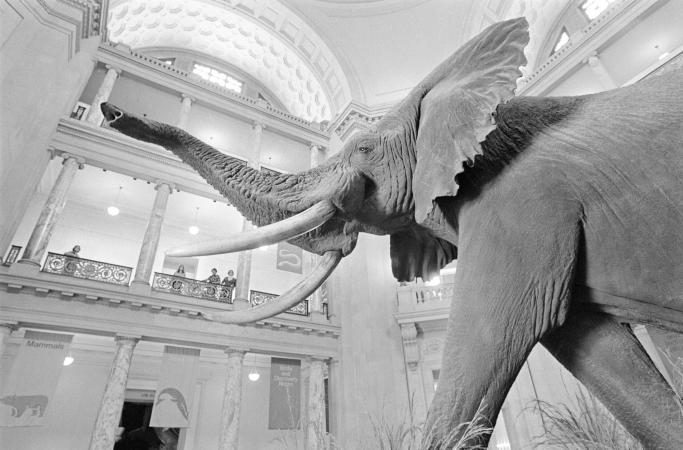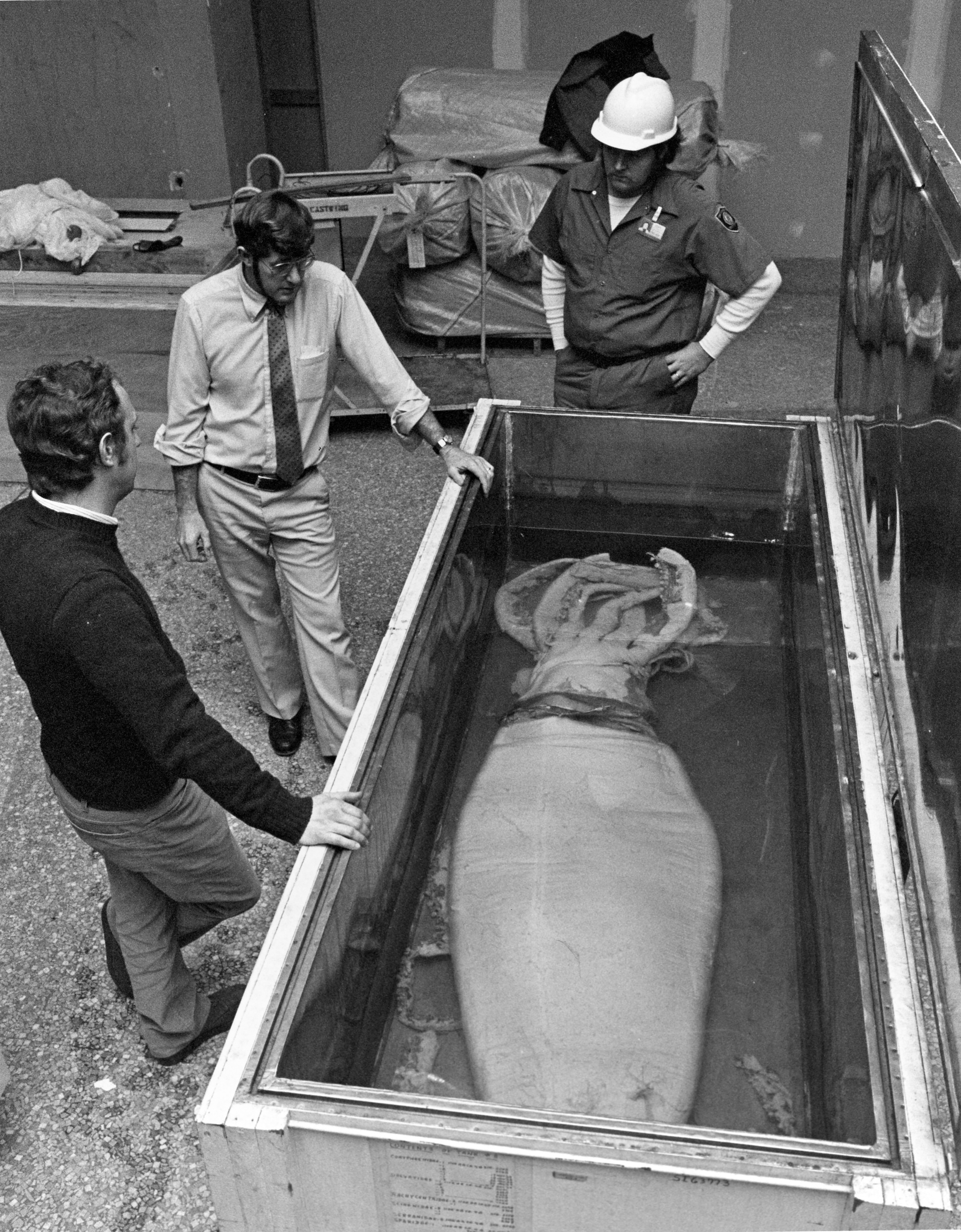Before the age of YouTube and Instagram, public audiences learned about the happenings at the Smithsonian in newspapers, on the radio, and via public television programming. Between 1982 and 1989, TV viewers could catch up with the Smithsonian’s latest exhibitions and research activities through short video features in a series called Here At The Smithsonian.
This month, we’re highlighting two videos from the Smithsonian’s National Museum of Natural History in 1983.
Henry, the 11-ton, 13-foot-tall African elephant, has greeted museum-goers in the rotunda since 1959. Donated to the Smithsonian by Hungarian-born engineer Josef J. Fénykövi in 1956, Henry now stands on a platform which includes information about African elephant ecology and the threat of poaching.

Over the years, Henry has had quite a few conservation makeovers. In a 1987 oral history interview, registrar Helena M. Weiss, who managed the Smithsonian’s collections, described what happened when the elephant arrived. “Bringing in the elephant was quite the event,” she recalled, “and it was almost two years before the exhibit was ready.” It took taxidermists William L. Brown and Norman N. Deaton sixteen months and more than eleven thousand pounds of clay to prepare the elephant for exhibit. Though Henry’s latest treatment was as recent as 2015, let’s head back to 1983, when conservators performed some dental work on his tusks.
Henry wasn’t the only enormous attraction in the Museum’s rotunda. In 1983, visitors clamored around a giant squid, preserved in 150 gallons of alcohol. The first giant squid specimen ever exhibited in a major U.S. museum, it had washed up on a shore off the Massachusetts coast in February 1980. Though damaged from being battered by waves, the specimen was a rare find.
Are you totally ~sucked~ in yet? Read about “Operation Calamari,” the Museum’s mission to acquire pristine specimens of a female and male giant squid from Spain in the mid-2000s.
Tune in on the last Tuesday of each month to explore more video features from Here at the Smithsonian. Head to our YouTube playlist for even more recently-uploaded clips from the series.
Related Collections
- Office of Telecommunications Productions, 1982-1989, Accession 00-132, Smithsonian Institution Archives
Related Resources
- “Here at the Smithsonian: Celebrating Earth Optimism with Some Community Science” by Kira Sobers, The Bigger Picture, Smithsonian Institution Archives
- “Here at the Smithsonian: Art Conservation” by Alison Reppert Gerber, The Bigger Picture, Smithsonian Institution Archives
- “Introducing Here at the Smithsonian” by Kira Sobers, The Bigger Picture, Smithsonian Institution Archives
Produced by the Smithsonian Institution Archives. For copyright questions, please see the Terms of Use.



Leave a Comment